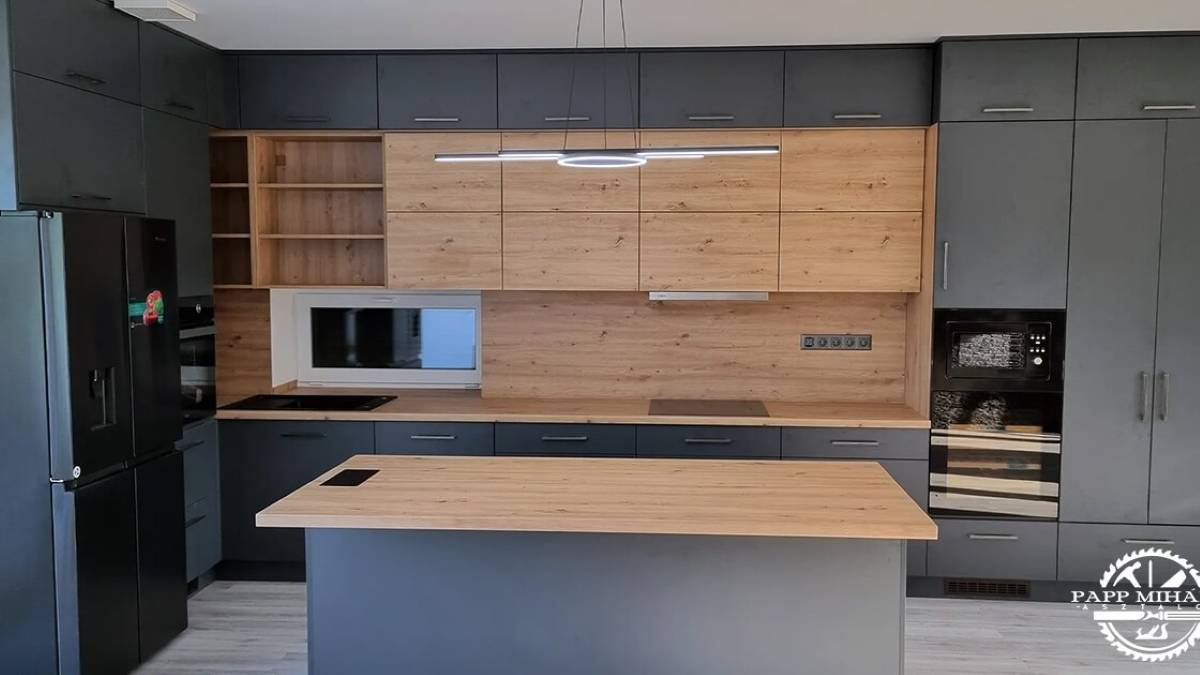A kitchen is more than just a place to cook — it’s the heart of the home. Whether you’re renovating or building a new space, creating a custom kitchen cabinet is one of the most exciting and defining parts of the process. Custom cabinetry is not just about aesthetics, but also about function, efficiency, and personality.
According to plan-p.hu, building a unique kitchen cabinet is a journey that blends craftsmanship with creativity, where every step — from planning to installation — matters.
Let’s walk through how a tailor-made kitchen cabinet comes to life.
Step 1: The Idea – Understanding Needs and Style
Every custom kitchen begins with a vision. This is the point where the client’s ideas, needs, and aesthetic preferences are brought to the table. A good cabinetmaker or interior designer listens carefully to understand:
-
How the kitchen will be used
-
What kind of appliances and storage solutions are needed
-
The desired style: modern, rustic, minimalist, classic, etc.
-
Budget and timeline expectations
Measurements are taken, inspiration photos may be shared, and priorities are clarified. This early collaboration is essential to ensuring the final design reflects both form and function.
Step 2: Design and Visualization
Once the needs are defined, the design phase begins. This typically includes:
-
3D visualization or CAD drawings to show the cabinet layout and dimensions
-
Material samples (wood types, colors, finishes)
-
Hardware options (handles, hinges, drawer systems)
-
Technical planning to accommodate appliances, lighting, and plumbing
At this stage, functionality is just as important as aesthetics. The design must account for practical elements like workflow, storage optimization, and accessibility. Often, designers work closely with the client to adjust the details until every drawer, shelf, and surface feels right.
Step 3: Material Selection
The materials chosen for a custom kitchen cabinet determine not only its appearance but also its durability and ease of maintenance.
Common options include:
-
Solid wood (e.g., oak, walnut, beech) – elegant, natural, long-lasting
-
MDF or plywood with high-quality veneers or paint – versatile and cost-effective
-
Laminate or acrylic fronts – modern, scratch-resistant, easy to clean
In addition to cabinet fronts, attention is paid to countertops, backsplashes, and interior fittings like soft-close hinges, pull-out shelves, or built-in waste sorting systems.
Step 4: Production – Precision and Craftsmanship
Once the design is finalized and materials are selected, the cabinet enters production. This step involves:
-
Cutting and shaping materials to precise dimensions
-
Surface treatments like painting, lacquering, or veneering
-
Assembling cabinet boxes, drawers, and doors
-
Quality control to ensure accuracy and flawless finishes
State-of-the-art machinery is often used alongside traditional woodworking techniques to guarantee a high standard of precision and durability. Every element is custom-fitted to the client’s specific kitchen layout — no two projects are exactly the same.
Step 5: Delivery and Installation
Once manufactured, the custom kitchen cabinet is delivered to the site and installed by experienced professionals. This phase is just as critical as the design and production stages, as even the most beautifully crafted cabinets must be perfectly leveled, secured, and aligned.
Installation usually includes:
-
Placing and fixing lower and upper cabinets
-
Integrating built-in appliances
-
Connecting sinks and countertops
-
Adjusting doors and drawers for smooth function
-
Final touch-ups and thorough cleaning
Installers ensure that everything is stable, gap-free, and visually cohesive. They also test functionality — drawers should glide effortlessly, and cabinet doors must open and close without resistance.
Step 6: Final Walkthrough and Satisfaction
After installation, the client and designer or craftsman walk through the completed kitchen together. This is the moment to review details, test usability, and address any last-minute questions.
If necessary, small adjustments or fine-tuning can be made. The goal is simple: that the customer feels satisfied, proud, and inspired by their new kitchen.
Why Choose a Custom Kitchen Cabinet?
Opting for a custom-built kitchen offers several benefits:
-
Tailored solutions that fit your space, style, and needs exactly
-
Higher quality materials and construction
-
Unique design that reflects your personality
-
Maximized use of space, especially in awkward or small kitchens
-
Long-term durability and investment value
While custom cabinets may take more time and cost more than mass-produced alternatives, the result is a personalized kitchen that feels like home from day one.
Conclusion: The Art of a Truly Personal Kitchen
Creating a custom kitchen cabinet is not just a technical process — it’s an act of co-creation between client and craftsman. From the first sketches to the final screws, each step is guided by intention, skill, and a shared vision. The result is more than furniture — it’s a living space built to support everyday moments and lifelong memories.
Source: plan-p.hu – Hogyan készül egy egyedi konyhabútor? Az ötlettől a beépítésig
